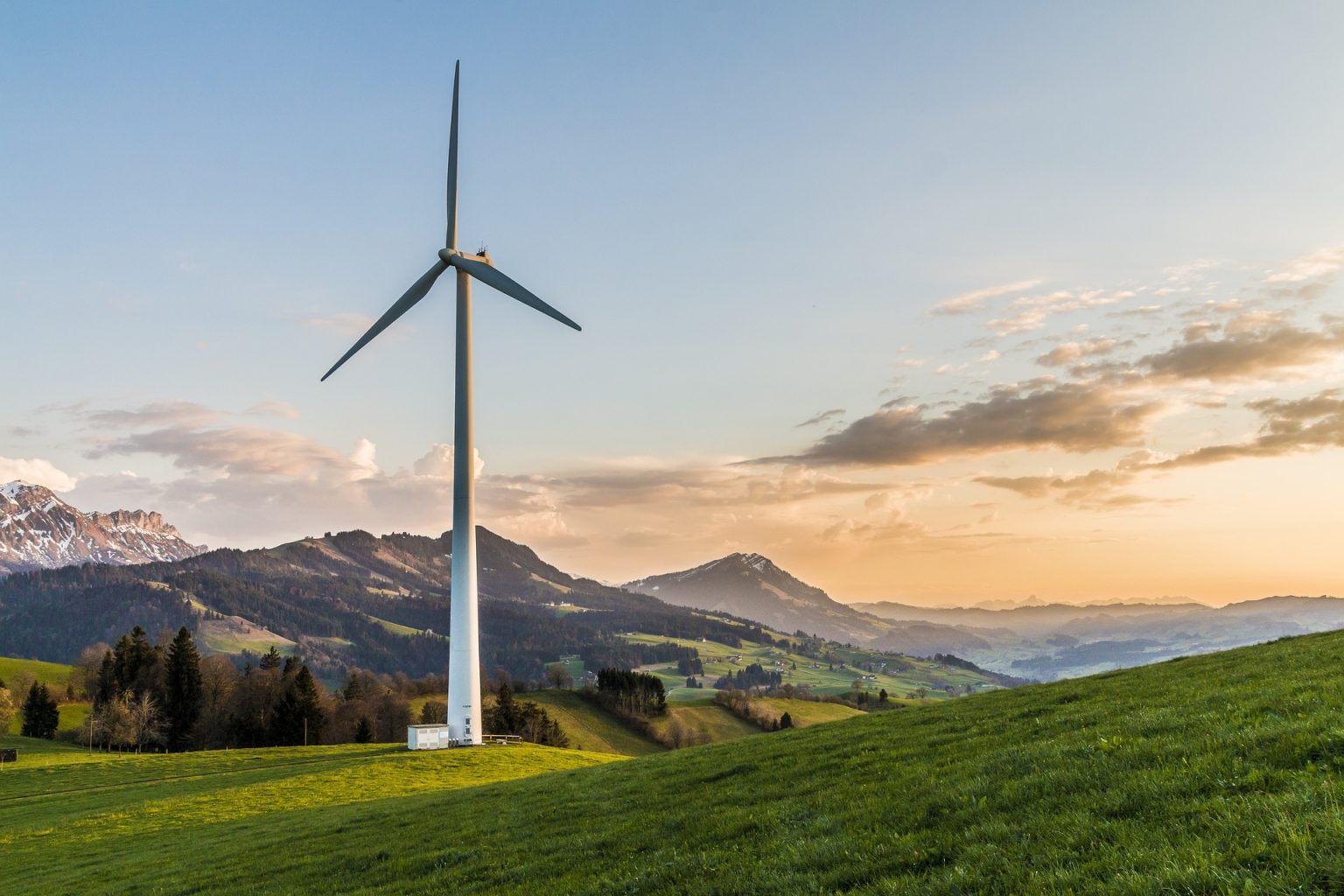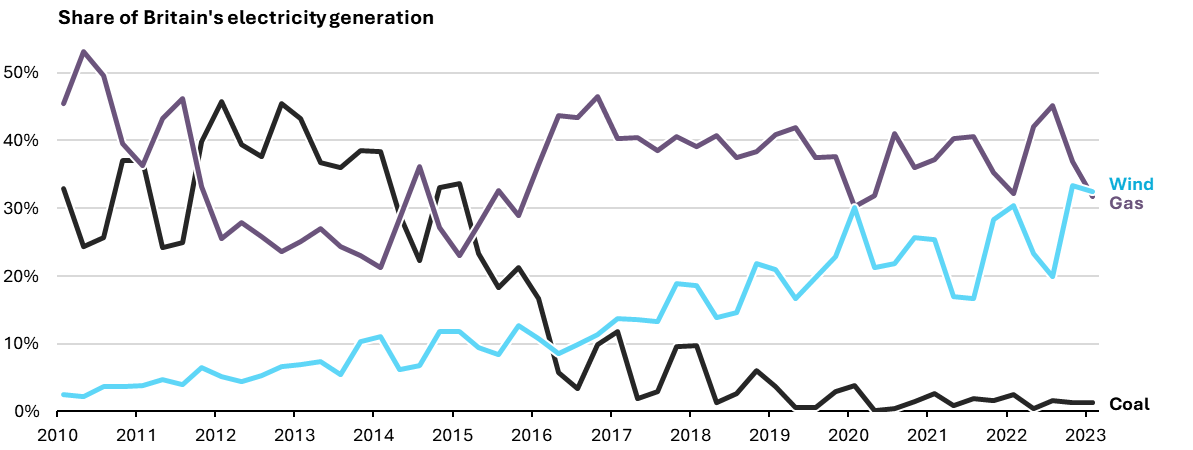Wind Power Surpasses Gas to Become Largest Source of Electricity in the UK

Wind power has overtaken gas as the primary source of electricity in the UK, according to the latest quarterly Drax Electric Insights report. The report, produced by Imperial College London academics, revealed that wind power contributed 32.4% of the country’s electricity in the first quarter of 2023, compared to 31.7% from gas. This marks the first time that wind power has supplied the largest share of electricity in any quarter in the country’s history.
Over the three-month period, wind turbines generated 24 TWh of electricity, a 3% increase from the same quarter last year. Meanwhile, gas generation decreased by 5%. Almost 42% of the country’s electricity came from renewable sources, including wind, solar, biomass, and hydro power, while fossil fuels supplied 33%. The rest of the electricity was imported or generated by the country’s shrinking nuclear power assets.

Dr Iain Staffell, the lead author of the Drax Electric Insights report and an academic at Imperial College London, hailed the findings as a milestone event, noting that the renewable power revolution has transformed the way the UK generates electricity, making the country’s power grid cleaner and greener. He acknowledged that there are still many obstacles to overcome to achieve a completely fossil fuel-free grid, but suggested that the UK’s success in cutting out coal in one decade shows what can be achieved with a supportive environment for clean technology investors.
This, however, does not stop the momentum the UK has in making the energy transition. Britain has just one coal-fired power station remaining following Drax retiring its plant in North Yorkshire last month. Once the largest coal-fired power station in Western Europe, the plant is now the single largest generator of renewable power in the UK. Over the last decade four of the power station’s six generating units have been converted to use sustainable biomass, providing the UK with clean energy using green renewable sources.
Bruce Heppenstall, Drax Power Station Plant Director, commented that the report was a remarkable achievement for the UK, particularly given the country’s current energy crisis. He urged the government to invest in carbon negative technologies, such as Bioenergy with Carbon Capture and Storage (BECCS), to remove carbon dioxide from the atmosphere and generate reliable, renewable power when wind and solar power are not available. Heppenstall argued that BECCS could help the UK establish itself as a world leader in carbon removals, attracting further clean energy investment, creating jobs, and achieving the country’s net zero targets.
The UK’s milestone, while noteworthy, is overshadowed by key infrastructure challenges . Between 2020 and 2021, the UK routinely halted wind turbines due to insufficient capacity for the country’s electricity transmission lines to handle the energy generated by wind turbines. Insufficient capacity results in a huge economic and energy output loss. This also results in increased carbon emissions output as fossil-fuel fired power plants have to be operated to compensate for the lost energy output from renewable sources.
With wind now overtaking gas as the primary energy generation source in the UK, the country will have to immediately address its electricity transmission capacity. This will take time, money, effort, as well as the need to rely on other energy sources to ensure a stable energy supply.
CleanEarth Media
Popular Now
More From Clean Earth










